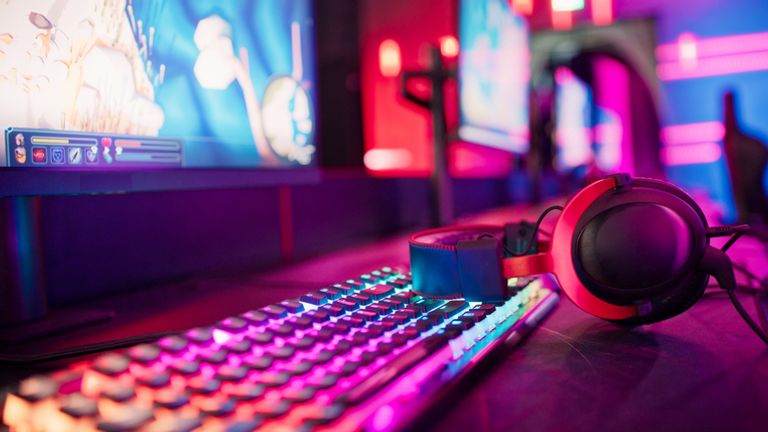It’s easy to get carried away when looking into upgrading your gaming hardware.
Just recently Sony announced their new PS5 Pro to much fanfare (and astonishment at the £699 price tag), meanwhile Nintendo fans hotly anticipate the Switch 2, whose launch date has reportedly been brought forward.
However, one vital part of the gaming rig often goes forgotten when gamers build their ‘battlestations’ – the screen.
To many people, all flatscreen TVs are created equally – but nothing could be further from the truth.
So what should gamers look out for when choosing the perfect gaming screen?
Firstly, there are big differences between television screens and computer monitors. PC monitors often boast higher pixel-density than TVs, which simply means they manage to cram in more pixels per inch of screen, which results in sharper image quality.
Monitors are also designed for minimal input-lag, which refers to the time it takes between the user pressing a key on their keyboard, and the letter appearing on screen. This can make all the difference in competitive gaming where buttons are pressed after split-second decisions.
PC screens are also much better adapted for gaming specifically.
The emergence of OLED technology has led to a revolution in display technology. Colours look more vivid than ever, while motion blur is reduced, meaning players can still identify objects in fast-moving environments.
Ultra-high definition, also referred to as 4K is becoming a common feature in high-end monitors. ‘4K’ refers to a resolution of around 4,000 pixels, making it a good choice for gaming or professional video editing.
But arguably the most important figure to focus on when checking the technical specs of a screen is the refresh rate.
The aforementioned input lag can make or break a professional esports game where every split-millisecond counts.
AGON by AOC manufacture gaming monitors, and their senior product manager, Cesar Acosta, told Sky News a “high refresh rate such as 240Hz is essential for competitive gaming. It reduces the time between frame updates, minimising input lag and providing smoother motion. This can give players a competitive edge.”
He went on to say that curved monitors, which are becoming more ubiquitous on the market now, “can also enhance immersion by better matching the natural curvature of human vision and enveloping the user to boost the immersion.”
Mr Acosta did warn however that OLED has a higher rate of screen burn, a process where an image can become emblazoned on a display left on for too long.
So why are gaming enthusiasts shelling out so much for displays when most games aren’t even in 4K?
Well, game graphics are progressing at an alarming rate. NVIDIA may be best known for building AI chips these days, but the third biggest company in the world has its roots in graphics processing units (GPUs).
Despite finding fame on Wall Street, NVIDIA is still a market leader in GPU production, even applying AI to its hardware to upscale older games, as well as make the most of new ones.
Bryan Catanzaro, vice president of applied deep learning research at Nvidia, told Sky News “We want to enable video games that look like they’re straight from the movies – realistic lighting, driven by full ray tracing, at 4k and beyond.”
These graphics cards aren’t cheap, but they are able to make older games look like modern-day releases. Their proprietary ‘DLSS’ technology uses machine learning to artificially insert frames and pixels to improve visuals. Catanzaro pointed out DLSS can artificially generate 7 out of every 8 pixels on screen, which can improve game graphics up to 4 times. This would upscale a game released in 1080p HD in 2014 to 4K today.
The market for monitors is large, there are many options. Fans of first-person shooters may want something with a lower resolution but higher refresh rate, and those who want to put their swanky new graphics card through its paces may look for a 4K OLED panel. The decision, as with everything in the varied, pricey world of gaming, comes down to the player, their priorities, and their wallets.



























